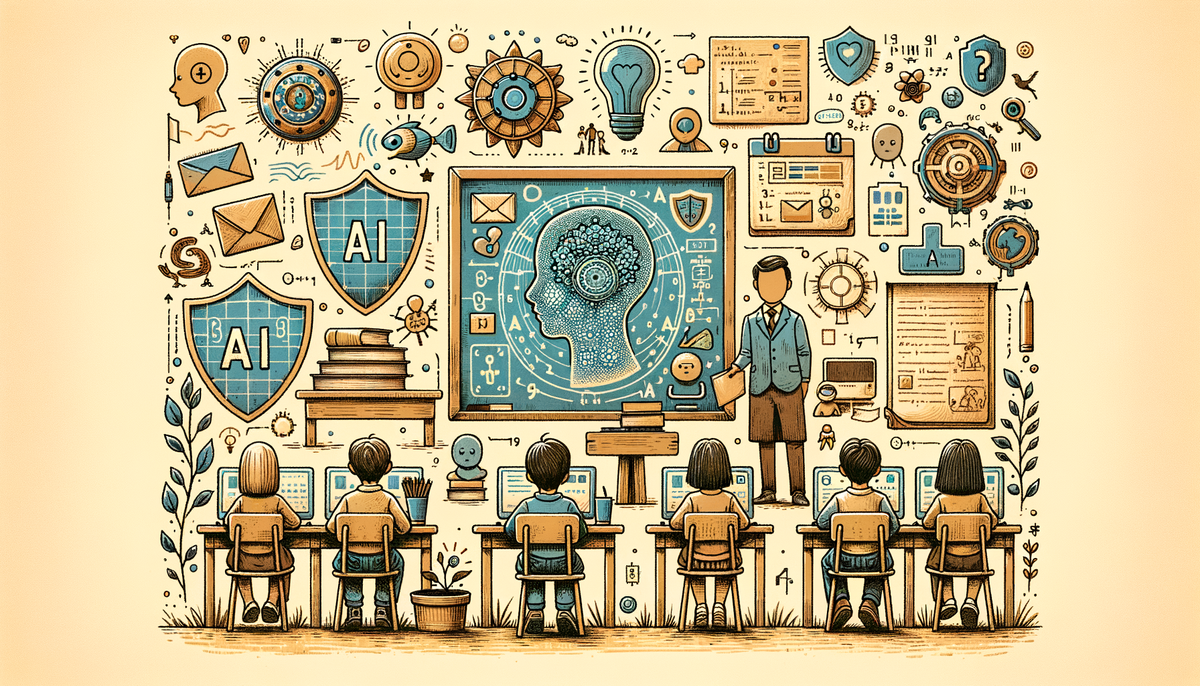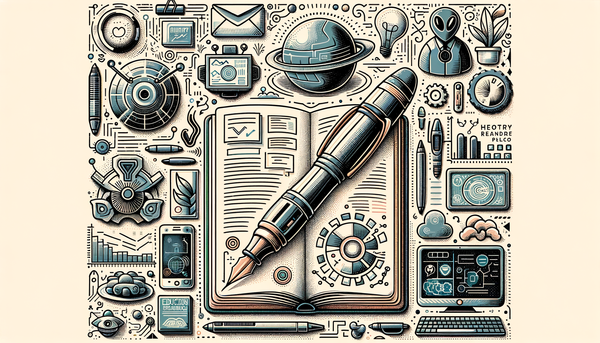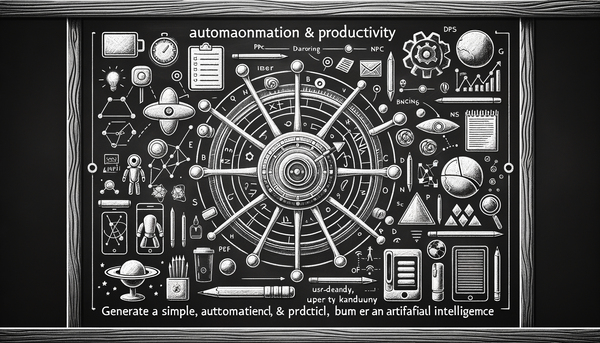AI in Skilled Trades Training: Revolutionizing Learning

Like a modern-day alchemy, AI has transformed the skilled trades training landscape, turning traditional classrooms into dynamic, adaptive learning environments that feel nothing short of magical.
The Magic Touch: How AI is Revolutionizing Skilled Trades Training
Skilled trades have long been the backbone of our society—from electricians and plumbers to carpenters and mechanics—yet traditional training methods often lag behind rapidly evolving industry needs. Today, artificial intelligence emerges as a groundbreaking catalyst, reinventing education by infusing each lesson with unprecedented personalization and precision. Lessons are no longer standardized one-size-fits-all; instead, AI tailors training modules for trainees based on their unique learning curves and real-time performance analytics.
Picture a scenario in which a budding tradesperson, eager to master wiring techniques, works with an intelligent system that observes minute errors and adapts the difficulty level accordingly. This dynamic interaction transforms routine training into an immersive, hands-on experience. When AI is deployed, training transcends the static pages of a manual, evolving into a responsive dialogue between the learner and the technology.
In many ways, the approach leaves one to wonder if these AI tools are nothing less than magic. A concept once relegated to the pages of fantasy now propels skilled labor into the future—merging human craftsmanship with machine analytics in a harmonious way.
Personalization: The New Frontier in Trade Education
Central to the new era of trades training is personalization. AI platforms collect a myriad of data points about each learner and craft bespoke learning pathways that consider an individual’s strengths, weaknesses, pace, and even previous experience. Rather than churning out generic lectures for every student, these platforms provide bespoke recommendations. Here, history and high technology converge in a unique blend where each trainee’s journey is honored, much like the personal mentorship of old apprenticeships but supercharged by data-driven insights.
A report in Fast Company described AI’s role in trades training as nothing short of magical, a sentiment that rings true when we look at how AI analyzes complex performance data to provide customized feedback. In this way, AI does not merely automate training; it evolves with the learner, paving the way for a mentoring style that is both natural and effective.
This form of tailored instruction is not restricted to trades training alone. Similar advances are being noted in other sectors, from traditional academic subjects to corporate skill development programs. In related coverage on our site, we have examined how intelligent tutoring systems have begun to rewrite textbooks and real-time problem solving for various disciplines, reinforcing the importance of personalization in modern education.
Unlocking Efficiency: The Benefits of Adaptive Learning
Adaptive learning systems powered by AI not only personalize content but also significantly enhance efficiency. With the capacity to analyze performance patterns rapidly, AI tools can flag areas where a trainee may be struggling and instantly adjust the curriculum. This adaptive feedback loop ensures that learners do not waste precious time on concepts they have already mastered, and instead, focus on skills requiring further improvement.
Consider, for instance, a computer simulation where an apprentice electrician is tested on diagnosing faulty circuits. Rather than simply providing a correct answer after a mistake, an intelligent system might analyze error patterns, offer nuanced hints, and even simulate similar fault scenarios. Such detailed customizations make learning iterative rather than static.
Efficiency in training leads to a more competent workforce. By being exposed to scenarios that mimic real-world challenges, trainees not only learn a set of predefined procedures but also develop a problem-solving mindset. This prepares them for unpredictability—a quality that is highly prized in skilled trades.
Indeed, this leap in educational efficiency is part of a broader shift in how industries perceive training. News outlets and industry experts alike point to the benefits of integrating AI, noting that the technology’s ability to deliver results in real-time can improve job readiness and pave the way for safer, more resilient work environments. Our own previous articles have highlighted how such technology improves operational workflows and safety protocols in high-risk industries, affirming AI's central role in modern training methodologies.
Real-World Applications: Beyond the Classroom
While the potential of AI in the classroom is exciting, the true impact of these tools can be seen in their real-world applications. For many trades, the leap from classroom training to on-site applications can be steep, with traditional methods sometimes falling short in simulating the unpredictability of daily on-the-job challenges. With AI-driven simulations, learners can practice in a safe, virtual environment that replicates real-world conditions closely.
Take, for example, the integration of virtual reality (VR) training modules buttressed by AI-based adjustments. A trainee can navigate through a simulated construction site where hazards are dynamically introduced based on the one’s progress. Such scenarios not only build technical knowledge but also equip the trainee with essential soft skills, such as risk assessment, immediate decision-making, and the execution of safety protocols.
In one illustrative case, a training program for welders incorporated VR scenarios alongside AI analytics to evaluate performance under varying conditions. The system provided real-time corrections and suggestions, improving overall technique faster than traditional methods could achieve. This demonstrates the tangible benefits of AI adoption—effectively bridging the gap between theory and practical expertise.
Moreover, such systems offer scalability. Across multiple geographical locations, a uniform quality of training can be maintained, ensuring that no matter where a trainee resides, they have access to world-class tools and assessments. This democratization of education, driven by AI, could be transformative for communities where traditional training facilities are less accessible.
Enhancing Job Prospects: Bridging Skills and Opportunities
The infusion of AI in trades training does more than just hone technical skills: it facilitates enhanced career prospects. With ever-evolving technologies and the growing complexity of industry systems, employers now prioritize versatility and continuous learning. When tradespeople engage with AI for training, they not only acquire current best practices but also develop adaptive learning techniques necessary to thrive in modern work environments.
For a skilled worker, the future is replete with opportunities that extend beyond traditional roles. For instance, technicians are now expected to interface with smart machines and advanced diagnostic tools in manufacturing. Thus, an education that integrates AI inherently prepares trainees for tomorrow’s challenges, effectively bridging the gap between education and industrial application.
Reassuringly, data from several industries suggests a positive correlation between skill-enhancing training and improved employment outcomes. Tradespeople who have trained using AI-powered systems report higher proficiency levels and faster adaptability to evolving industry practices. As a result, many employers now view such training as indicative of a candidate’s commitment to lifelong learning and innovation.
On our site, we have explored similar trends in several articles discussing workforce digital transformation. When industries cite examples of reduced on-boarding times and increased productivity, the underlying message is clear: integrating AI training is not just a technological upgrade—it’s a strategic business decision that pays dividends across the board.
Challenges and Considerations on the Path to a Smarter Future
No technological advance comes without its challenges. As AI systems are integrated into skilled trades training, stakeholders must navigate a range of practical and ethical considerations. One of the primary concerns is the balance between human intuition and machine precision. While AI can analyze data at unmatched speeds, there remains an irreplaceable value in the time-tested experience of veteran tradespeople.
It is therefore essential to view AI not as a replacement for human expertise, but rather as a tool that amplifies and enhances human capabilities. Traditional mentors bring contextual insights, creativity, and empathy—qualities that even the most advanced AI systems have difficulty emulating completely. The future, then, may well lie in hybrid training models where AI’s data-driven recommendations complement the seasoned judgment of human experts.
This balance is echoed in many expert opinions and research studies. A popular saying in the tech community goes, "The human touch is what makes the difference," and nothing could be truer in the context of skilled trades. A well-designed hybrid training approach harnesses the best of both worlds: machine learning’s analytical power and the nuanced understanding of experienced mentors.
"The tools and technologies we've developed are really the first few drops of water in the vast ocean of what AI can do." – Fei-Fei Li
This insight encourages stakeholders to experiment responsibly with AI, always keeping in mind the needs of human operators. Rigorous monitoring systems and ethical guidelines should be implemented to ensure that the integration of AI into training not only raises technical standards but also preserves the human values crucial to skilled trades.
Moreover, the definition of success itself in educational environments may need to be reworked. Instead of a singular focus on academic scores, success should be measured by adaptability, problem-solving skills, and the ability to operate complex machinery safely and efficiently. This shift in perspective will require both educational institutions and industry players to rethink traditional metrics in favor of a more holistic, skills-based approach.
Ethical Implications and the Future of AI-Driven Training
While the ripple effects of AI in skilled trades are overwhelmingly positive, thoughtful consideration of ethical implications remains paramount. Questions related to data privacy, algorithmic bias, and the digital divide need to be addressed as these systems become more pervasive. As much as AI heralds efficiency and personalization, its reliance on massive data streams necessitates robust frameworks to protect user information and guarantee fair access to resources.
Notable voices in the field have raised important considerations about the future regulatory landscape. Gray Scott provocatively questioned, "The real question is, when will we draft an artificial intelligence bill of rights? What will that consist of? And who will get to decide that?" This query is not just philosophical; it challenges policymakers and industry stakeholders alike to engage in dialogues centered on transparency and accountability.
Create partnerships across sectors as vital as education, technology, and public policy to draft appropriate guidelines and codes of conduct. Drawing on lessons from data regulation and privacy rights emerging in other fields, skilled trades training can benefit from preempting issues before widespread adoption creates deeper systemic challenges.
In managing these ethical challenges, continuous feedback loops between technology developers, educators, and trainees become crucial. Ensuring that AI tools remain unbiased and accessible might involve regular audits, third-party assessments, and open channels for user feedback. The aim should be an ecosystem where progress in AI-driven education is matched by equally progressive safeguards for its human users.
Innovative Case Studies: Lessons from the Field
Across the country, pioneering training programs are opening new pathways for lifelong learning through AI. In a striking example, a community college integrated an AI-powered system into its welding program. The system simulated various welding scenarios, complete with changing environmental factors and unexpected system failures that challenged students to adapt quickly. The result was a generation of welders who were not only technically proficient but also exceptionally resilient under pressure.
Another case can be found in a governor-driven initiative in a midwestern state, where vocational centers incorporated AI to prepare apprentices for modern machine diagnostics and maintenance. Trainees received personalized dashboards tracking their progress, leading to more effective remediation when challenges arose. Employers noted that such trainees were better prepared to manage sophisticated automated systems, a clear competitive advantage in industries where downtime can be costly.
Such studies demonstrate how AI can push the envelope of traditional training methodologies and contribute to a more agile and prepared workforce. These success stories have been echoed in industry news and academic research alike, reaffirming the role of data analytics in creating robust educational frameworks that lead to tangible improvements in career readiness.
For those interested in a deeper dive into these innovations, you might want to explore our feature on AI innovations in training methodologies, which offers a broader overview of how emerging technologies are re-shaping professional education.
Expanding Horizons: The Intersection of AI, Technology, and Human Ingenuity
The narrative of AI in skilled trades training is part of a larger story of digital transformation sweeping across industries. Once considered a futuristic luxury, smart technology is now integrated into the fabric of everyday business operations. Whether it is predictive maintenance in manufacturing, real-time analytics in construction, or adaptive learning in education, AI is proving itself indispensable in bridging the gap between theoretical knowledge and practical application.
This evolution is particularly compelling when we consider the broader implications of merging human creativity with computational efficiency. The enriched training processes encourage a culture of continuous improvement that extends well beyond the classroom. For instance, innovative startups are leveraging AI to offer comprehensive platforms where learning journeys are mapped out for every individual—the same concept underpinning customized career development programs in modern corporations.
Anecdotes from the field abound. I recall an early conversation with a seasoned carpenter who was initially skeptical about AI, remarking that "nothing could ever replace the feel for the wood." Yet, after experiencing an AI-driven simulation of skill challenges intricately designed to mimic real-world variances, his perspective shifted. He acknowledged that while traditional instincts remain invaluable, technology had unveiled new methods for refining age-old practices.
Such stories underscore the transformative potential of AI when it is employed as a supportive tool. Ultimately, this marriage of technology and human expertise heralds a future where safety, precision, and innovation go hand in hand. In embracing these changes, industries can nurture a workforce capable of not just meeting, but exceeding the rapidly evolving demands of the modern world.
Looking Ahead: Bridging the Old and the New
Having witnessed the profound impact of AI on skilled trades training, it is clear that the technology is not simply a passing trend but a harbinger of lasting change. As digital tools continue to evolve, so too will the methods through which we impart practical skills. The result is a hybrid model that honors traditional apprenticeship wisdom while harnessing data-driven insights to prepare the workforce for new technological challenges.
In many ways, we stand at a crossroads. On one side lies the rich heritage of manual craftsmanship, and on the other, the boundless potential of intelligent systems. Navigating this landscape demands more than just technological prowess—it requires a cultural shift in how educational success is defined and valued.
This convergence of old and new offers a unique opportunity for industries to reimagine training. Future developments might include fully immersive augmented reality environments where trainees interact with virtual replicas of real-world challenges. Alternatively, AI could eventually lead to proactive mentoring systems that predict industry needs and preemptively update training curricula. The potential is limitless, and each step forward not only opens new avenues for learning but also reinforces the essential human values of diligence, adaptation, and perseverance.
Our ongoing coverage on AI-driven transformations at AI.Biz continues to explore these themes, offering insights into how emerging technologies are continuously reshaping the business landscape. This is a story in progress—one where the fusion of human ingenuity and artificial intelligence writes new chapters in the annals of education and industry.
Integrating Insights from Experts
Experts across the globe have offered powerful insights into the transformative potential of AI in education and skilled trades. One notable sentiment comes from Fei-Fei Li, who observed, "I believe in human-centered AI to benefit people in positive and benevolent ways." Her perspective underscores that the true magic of AI lies not only in its technological marvels but also in its capacity to empower human beings.
Such views are echoed in countless discussions across research circles and industry seminars. The vision is not to displace the human element but rather to augment our ability to learn, adapt, and excel in increasingly competitive environments. This sentiment is vital as we consider the sustainability of AI-driven training models in practical, everyday applications.
As we chart a course forward, it is important for educators and decision-makers to remain vigilant about the social implications of these technologies. Steering through the ethical landscape will require balancing innovation with empathy and ensuring that technology always serves as a means to elevate human potential rather than diminish it.
Further Readings and Resources
For readers interested in diving deeper into the subject, several resources provide expansive insights into AI’s role across different sectors:
- How AI is Like Magic for Skilled Trades Training – Fast Company
- Advanced AI in Training Methodologies – AI.Biz
- AI Research Papers and Publications
These readings offer additional context and case studies on how adaptive learning and personalized training powered by AI are paving the way toward a future that is more responsive, inclusive, and innovative.
Final Reflections: Embracing the Future with Open Arms
As AI continues to transform the face of skilled trades training, it encourages us to reimagine how education and work intertwine. This transformative journey is reminiscent of a timeless narrative, where every technological breakthrough is a chapter added to the enduring saga of human progress. Embracing AI in our training programs doesn’t signal the end of traditional values but rather the dawn of more inclusive, adaptive, and resilient learning paradigms.
In embracing the latest advancements, we honor the legacy of those who came before while empowering the innovators of tomorrow. The magic of AI lies in its ability to bridge gaps, foster excellence, and ultimately help craft a workforce that is both skilled and agile enough to meet the future head-on. We find ourselves at a pivotal moment in history where collaboration between human insight and machine intelligence is not just beneficial—it is essential.
By integrating AI into skilled trades training, industries are investing in a future that appreciates the value of continuous learning and adaptation. It is this spirit of innovation, tempered by respect for time-honored practices, that will drive us to new heights in professional excellence. After all, as one contemporary expert aptly put it, "The tools and technologies we've developed are really the first few drops of water in the vast ocean of what AI can do." Such optimism is a fitting reminder that the journey of learning and advancement is only just beginning.



